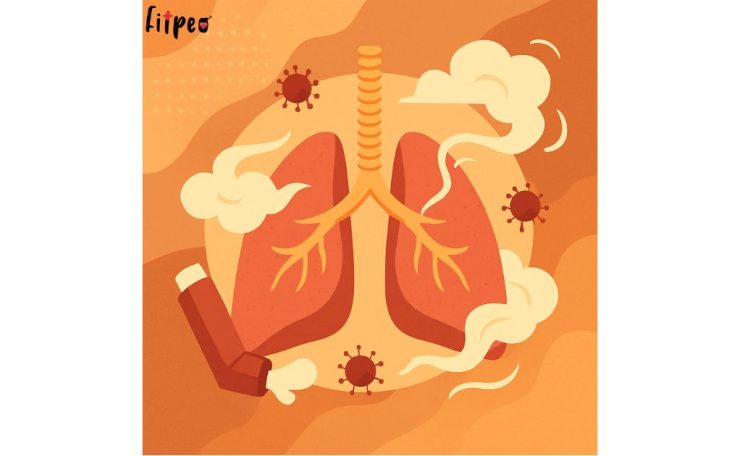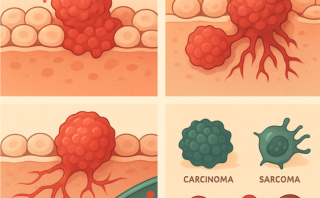Asthma is one of the most common chronic conditions affecting both children and adults. While it can be frightening at times, especially during severe episodes, the good news is that asthma can usually be managed effectively with the right knowledge and care. Let’s break down what you need to know about asthma—without the medical jargon.
What Is Asthma?
Asthma is a long-term (chronic) disease that affects the lungs and makes it difficult to breathe. When you have asthma, your airways become inflamed and narrow, which can make everyday activities—like walking or talking—harder during flare-ups. Asthma isn’t just a passing issue. It affects about 25 million people in the United States and results in nearly 1.6 million emergency room visits every year. With proper treatment, most people with asthma live active and healthy lives.
Recognizing Asthma Symptoms
Asthma looks a bit different for everyone, but it is mainly driven by three things: inflammation, muscle tightening around your airways, and excess mucus.
These issues can cause:
- Coughing, especially at night or early morning
- Wheezing (a whistling sound when you breathe)
- Shortness of breath
- Chest tightness, pain, or pressure
- Trouble sleeping because of breathing problems
Your symptoms may come and go, vary in intensity, or even disappear for long stretches. Some people only have symptoms with exercise or when they have a cold.
What Is an Asthma Attack?
An asthma attack happens when your airways tighten up quickly, usually in response to a trigger such as allergens or exercise. The airways get even more inflamed and make extra mucus, causing:
- Severe shortness of breath and rapid breathing
- Wheezing or constant coughing
- Chest pain or tightness
- Trouble talking or walking
- Blue lips or fingernails (a sign of low oxygen—call 911!)
Asthma attacks can get dangerous in a hurry, so it’s important to follow your asthma action plan and seek immediate help during a severe episode.
How Doctors Classify Asthma
Doctors rank asthma based on how often you have symptoms and how much they affect your life:
- Mild intermittent: Symptoms less than twice a week
- Mild persistent: Symptoms more than twice a week
- Moderate persistent: Symptoms every day
- Severe persistent: Symptoms throughout the day and at night
Types of Asthma
Asthma isn’t one-size-fits-all. There are several types, including:
- Allergic asthma: Triggered by allergies (like pollen, pets, or dust)
- Exercise-induced asthma: Brought on by physical activity
- Adult-onset asthma: Starts later in life
- Occupational asthma: Caused by things you breathe in at work
- Nocturnal asthma: Gets worse at night
- Cough-variant asthma: The only symptom is a chronic cough
Some people can have more than one type, and triggers can be different for everyone.
What Triggers Asthma?
Asthma attacks often happen after exposure to “triggers.” Common ones include:
- Allergens: pollen, mold, pets, dust mites
- Air pollution or strong odors
- Tobacco smoke
- Exercise (especially in cold air)
- Stress or strong emotions
- Certain medications (like aspirin)
- Acid reflux (GERD) or respiratory infections
Knowing and avoiding your triggers is a big part of asthma management.
Who’s at Risk?
You’re more likely to develop asthma if:
- It runs in your family, especially your mother
- You had certain exposures during pregnancy or early childhood
- You’re from certain racial or ethnic groups (African American and Puerto Rican communities are especially affected)
- You have allergies, obesity, or certain lung infections
Men are more likely to have asthma as children, but in teens and adults, asthma is actually more common in women.
Asthma in Women
Hormonal changes—such as those during menstrual cycles, pregnancy, or menopause—can affect asthma symptoms in people assigned female at birth. Some women notice that their symptoms get worse around their period or during pregnancy. Managing hormones and triggers with your doctor’s help is key to better asthma control.
How Is Asthma Diagnosed?
If you think you might have asthma, see your doctor. Diagnosis usually involves:
- A physical exam and medical history
- Breathing tests such as spirometry (how much air you can blow out and how fast)
- Home monitoring with a peak flow meter
- Allergy testing if allergens may be a trigger
- Chest X-rays or CT scans to rule out other conditions, if needed
Options for Asthma Treatment
There are many effective treatments for asthma. Your doctor will help you create a personal “asthma action plan,” which may include:
1. Daily controller medications
- Inhaled corticosteroids (reduce inflammation long-term)
- Leukotriene modifiers (block substances that cause asthma)
- Long-acting bronchodilators (help keep airways open)
2. Quick-relief (‘rescue’) medications
- Short-acting beta-agonists (work fast to open airways during attacks)
3. Other treatments
- Oral or intravenous steroids (for severe attacks)
- Biological medicines (for certain types of severe asthma)
- Anticholinergics (another type of bronchodilator)
Most people manage with inhalers, but some folks with very severe or difficult-to-control asthma might need extra help.
Caring for Yourself at Home
Managing asthma is a daily effort. Here are some tips:
- Avoid your personal asthma triggers, as best you can
- Take your medication exactly as prescribed, even when you feel fine
- Exercise regularly and keep a healthy weight
- Get vaccines to protect against illnesses like the flu and COVID-19
- Use a peak flow meter at home to monitor your breathing
- Learn breathing exercises (they can help some people reduce symptoms)
- Talk to your doctor before using alternative treatments or supplements
Potential Complications
When asthma is not well controlled, it can:
- Lead to regular fatigue, weight gain, or mental health troubles
- Increase hospital or ER visits
- Cause time away from work or school
- Raise your risk for severe problems like pneumonia, lung collapse, or—in pregnancy—complications for both mother and baby
Preventing Asthma Attacks
Your asthma action plan should include:
- Identifying and avoiding triggers
- Taking your prescribed medication consistently
- Knowing when symptoms are getting worse—and what steps to take
- Keeping all recommended vaccines up to date
Living Well with Asthma
Asthma doesn’t have to limit your life. Here are some everyday steps for better asthma control:
- Learn about your condition: The more you know, the more confident you’ll feel.
- Stick to your medication schedule: Even if you’re feeling well!
- Make healthy lifestyle choices: Sleep, stress management, and quitting smoking go a long way.
- Build an asthma action plan: With your healthcare provider. Know what to do in an emergency.
Takeaways
Asthma is a lifelong condition, but you can still lead a full and active life. By carefully managing your triggers and staying consistent with your medications, you’ll have fewer symptoms and fewer disruptions to your day.
Common Questions
Q} Can you outgrow asthma?
Asthma is usually lifelong, but symptoms can change or seem to disappear for a while—especially in children.
Q} Can stress cause asthma?
Strong emotions and anxiety can trigger asthma symptoms, so relaxation techniques can help.
Q} Is asthma a disability?
In severe cases that require intensive treatment, asthma can qualify as a disability for support programs.
Learn More
For additional information on asthma symptoms, diagnosis, and treatments, check out these resources:
- WebMD: What is Asthma?
- WebMD: Asthma Attack
- WebMD: Asthma Causes & Triggers
- WebMD: Types of Asthma
- Asthma and Allergy Foundation of America
- American Lung Association: Asthma




